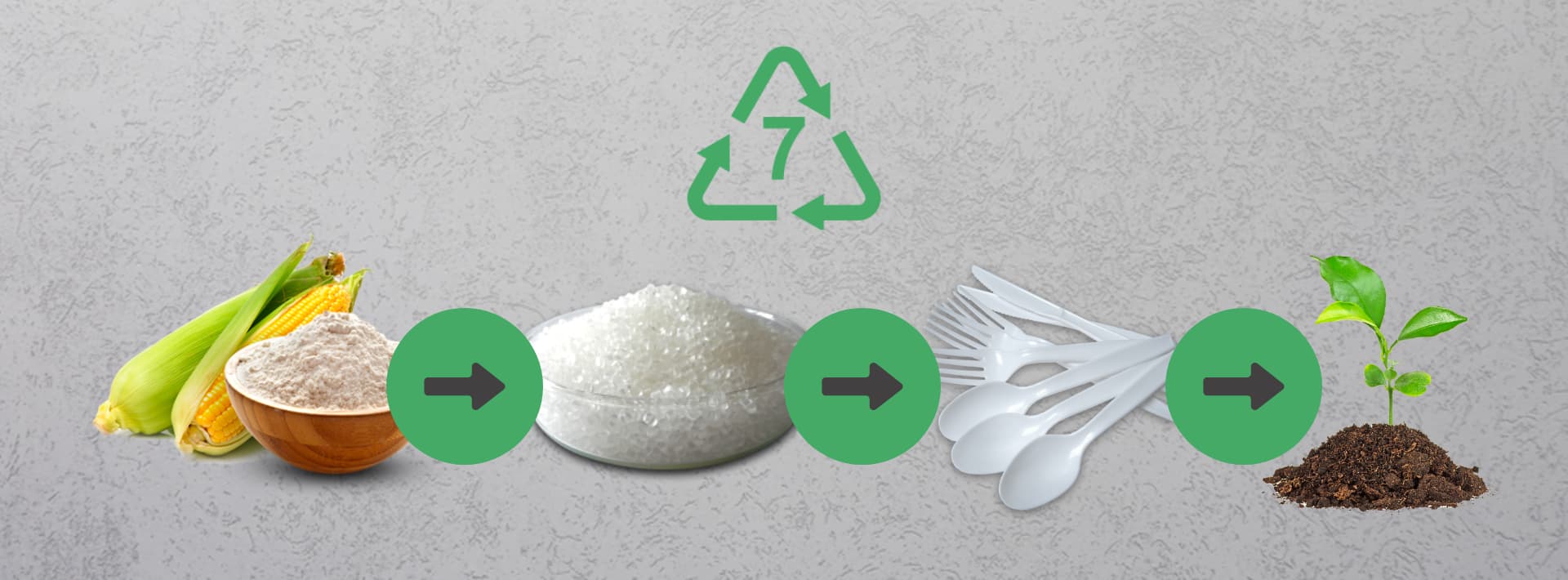In this Article
Earth-First Print: Everything you Need to Know about PLA
Responsibly sourced smart purchasing is the future. Organisations are joining the sustainable movement and continuing to take ownership of purchasing intent; petro-chemical based plastics that litter the planet just don’t cut it anymore. Solving the global environmental crisis posed by single-use plastics and minimising our carbon footprints seems like an unattainable task. However, to create a cleaner planet, we must face transatlantic issues head-on - if you are a sole consumer or own a large print corporation, switching to bio-film alternatives, such as PLA, is certainly a step in the right direction.

What is PLA?
PLA is a polymer made from vegetable-based materials. Polylactic acid, contrary to other petroleum-based thermoplastics, uses renewable earth-friendly resources such as; corn starch, tapioca roots, or sugarcane. PLA is a dramatically less harmful consumer-waste product that acts as a favourable starchy alternative and competitive commodity to plastic.
How is PLA Manufactured?
Polylactic acid is produced by fermentation under highly controlled conditions. Initially, corn travels through a wet milling process to separate the starch; which is then mixed with acid or enzymes and later heated. The fermentation process ‘breaks’ starch into dextrose (D-glucose), or corn sugar and finally, L-lactic acid is produced, which is the basic component of PLA.

A Greener Future with PLA
You may be second-guessing and asking why this discourse is extensively examining polylactic acid. Well, let me inspire intrigue and enlighten you! PLA performs much like traditional plastics, all with the pivotal benefit of being 100% compostable and an entirely bio-based renewable material. Multifunctional, food-safe, and perfect for high-strength needs, PLA is a non-toxic carbon-neutral substitute to traditional plastics.
PLA can biodegrade within 3 months, a greener alternative to petroleum-based plastic which can take up to 100 - 1,000 years to fully decompose. Once used, PLA undergoes a transformation into natural materials, such as carbon dioxide, composite, or water, and hereby returns raw nutrients back to the planet. What’s more, PLA is principally a thermoplastic; which essentially is a robust and versatile material that can be moulded, melted, and mechanically reshaped according to specific industry needs.

PLA Printing
Earlier on we discussed drinking using biodegradable paper cups and they are an excellent product made from PLA. Bioplastics, such as PLA, work towards a circular economy and sustainable recovery infrastructure. A catalyst for technological innovation, PLA not only offers economic potential but also gives rise to commercial landfill avoidance and specifically targets the universal single-use plastic problem. As a local green print shop, we are always looking to exponentially expand our eco-friendly print offering and provide responsibly sourced products to the UK market - all at a wallet-friendly price!
PLA offers huge scope to be mass manufactured and mechanically engineered; an exciting prospect that will hopefully surpass non-renewable plastics which are currently dominating the global market. We have got behind this highly prosperous plant-based offering and currently stock Biodegradable PLA labels as an alternative to transparent plastic labels and biodegradable paper coffee cups which are fully compostable! At Apprintable, we have a powerful commitment to make the print industry a little greener, so this year, in particular, we will be developing our PLA product range and aim to manufacture PLA flyers and posters.
It is abundantly clear that we must collectively address our detrimental throwaway culture, which includes sole consumers, business owners, entrepreneurs, and even governing bodies. By investing in eco-friendly print, business leaders elucidate the positive steps towards a cleaner sustainable future. Will you make the bioplastic switch? The future is PLA!
Related Articles
For the latest tips, check our blog



